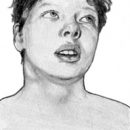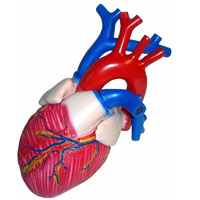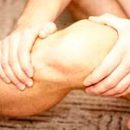Complications of acute appendicitis are different depending on the occurrence of acute attack of pain. In the early period of the disease there is no complication, but after a few days the perforation of the process may appear, peritonitis and thrombophlebitis of veins of the mesentery.
Content
Options for complications of appendicitis
Complications of appendicitis are different depending on the time that has passed since the occurrence of the disease. The early period (the first two days) is characterized by the lack of complications, the process is usually not beyond the limits of the process, although changed shapes and even perforation can be observed, especially in children and old people.
In the interstitial period (3-5 days from the beginning of the disease) are usually complications:
- Perforation of the process
- Local peritonitis (inflammation of peritoneum)
- thrombophlebitis vessels mezezyshki process
- Apandicular infiltrate (tissue seal around the process of inflammation)
In the late period (after 5 days) there are spilled peritonitis, appendicular abscesses (due to the breakthrough of infiltrate or as a result of peritonitis), thrombophlebitis of the portal vein - pylephlebit, liver abscesses, sepsis.
Perforation
Perforation is usually evolving for 2-3 days from the beginning of the attack during destructive forms of appendicitis, is characterized by a sudden gain of pain, the appearance of a pronounced picture of the local peritonite (local disease in the field of process, an increase in body temperature), increasing the number of leukocytes in peripheral blood.
Apandicular infiltrate
 Apandicular infiltrate is a conglomerate of the emergence of the inflammation of the internal organs - the gland, thin and blind guts. This complication is rarely diagnosed on a pre-hospital stage, sometimes only during the operation. Develops for 3-4 days after the start of the attack, sometimes as a result of perforation. It is characterized by the presence of dense tumor formation in the right lower abdomen, moderately painful. Painful symptoms of the process subscribe, as inflammation is eliminated, the stomach becomes soft. Temperature is usually held at level to 38?C, there is an increase in the number of leukocytes, the chair is broken. With other arrangements, the process of infiltrate can be felt in accordance with the location of the process, with a low location, it is determined through the rectum or vagina. In the diagnosis of appendicular infiltrate helps ultrasound examination. In doubtful cases, laparoscopy is produced (study of the abdominal cavity using visual methods).
Apandicular infiltrate is a conglomerate of the emergence of the inflammation of the internal organs - the gland, thin and blind guts. This complication is rarely diagnosed on a pre-hospital stage, sometimes only during the operation. Develops for 3-4 days after the start of the attack, sometimes as a result of perforation. It is characterized by the presence of dense tumor formation in the right lower abdomen, moderately painful. Painful symptoms of the process subscribe, as inflammation is eliminated, the stomach becomes soft. Temperature is usually held at level to 38?C, there is an increase in the number of leukocytes, the chair is broken. With other arrangements, the process of infiltrate can be felt in accordance with the location of the process, with a low location, it is determined through the rectum or vagina. In the diagnosis of appendicular infiltrate helps ultrasound examination. In doubtful cases, laparoscopy is produced (study of the abdominal cavity using visual methods).
The presence of infiltrate is the only contraindication to the operation (as long as he has not switched to abscess), t.To. Attempting to highlight the proof from the conglomerate of the organs soldered to it entails the risk of intestinal damage, mesenter, the gland, which is fraught with severe complications.
Treatment of infiltrate should be conservative (conducted in the hospital), assigned:
- Cold locally
- Wide spectrum antibiotics
- Double-sided panefral blockade
- Laser blood irradiation
- Blood disaggregates
- Proteolytic enzymes
- Diet - rubbed soups, liquid porridges, kissels, fruver juices, white crackers
Infiltrate is absorbed in 85% of cases, it usually happens on time from 7-19 days to 1.5 months. Slow absorption of infiltrates suspiciously for tumor. Before discharge, irrigoscopy is required - to eliminate the tumor of the blind.
After the disappearance of all signs of the patient is discharged with an obligatory indication of the need for an operation - appendectomy (removal of the process) 2-2.5 months after the resorption of infiltrate.
If the infiltrate was not diagnosed before the operation and came a find on the operating table, it is impractical to remove the process - the operation ends with the introduction of drainage and antibiotics into the abdominal cavity.
Appendicular abscesses
Appendicular abscesses - develop in late period, more often as a consequence of the suppuration of appendicular infiltrate (before surgery) or the separation of the process during peritonitis (more often after operations). Develops for 8-12 days after the start of the disease. All abscesses are subject to operation - opening, rehabilitation and drainage according to the general rules of surgery.
General signs of autopsy abscess:
- deterioration of general condition
- Increase body temperature, sometimes with chills
- The increase in the number of leukocytes
Signs of the autopsy of the abscess, in addition to general phenomena, is an increase in the sizes of infiltrate or the lack of a decrease in its.
Treatment of abscess in the stage of infiltrate is to conduct antibiotics, warm enema 41-50?C, sinking. When an abscess show an autopsy.
Pilyfelbit
Pilyphlebit - inflammation of the portal vein, is a consequence of the distribution of the process from the veins of the mesenzhechki process for mesenteric veins. Represents an extremely difficult complication, accompanied by high temperature, repeated chills, redness of the skin, yellow skin. There are sharp pains around the abdomen. Subsequent - multiple liver abscesses. Usually ends with death in a few days, sometimes sepsis. Pillampite treatment is to appoint anticoagulants in combination with a wide range of action, preferably with direct introduction to the gorgeous vein.
Chronic appendicitis
As a rule, it is a consequence of acute, less often develops without prior attack. The main symptoms of chronic appendicitis are pains in the right lower abdomen, which are permanent, sometimes fitful character, are accompanied by nausea, constipation, sometimes diarrhea at normal temperature and blood pattern.
When making a diagnosis, the history of the disease is very important (the presence of sharp attacks). Recently, important importance is attached to the irrigoscopy data to determine the deformation of the draft-like process or the absence of its fill. This is regarded as direct and indirect signs of chronic appendicitis.
Differentiation Chronic appendicitis is necessary from gynecological diseases, diseases of the right urinary tract, duodenal ulcerative disease, chronic cholecystitis, spastic colitis, wrench invasion, tuberculosis and blind gut cancer.
With the diagnosis of chronic appendicitis, the treatment is only operational, but remote results after operations on chronic appendicitis are worse than after sharp appendicitis.









